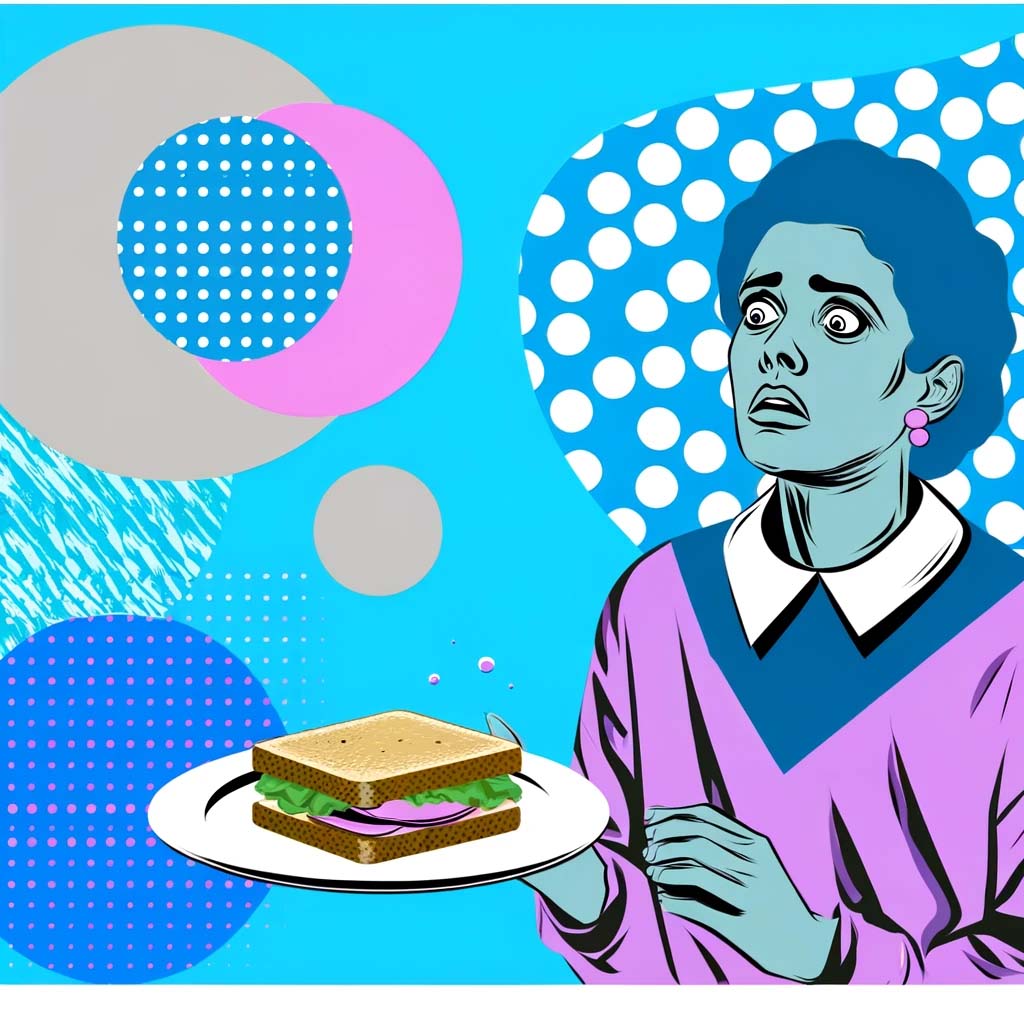Emetophobia, or the fear of throwing up, often gets shrouded in misunderstanding and misconceptions. This can lead to feelings of isolation, shame, and a sense of being “unreasonable” for those struggling with this very real and debilitating anxiety disorder. Today, we aim to debunking myths and misconceptions about emetophobia:
Myth #1: Emetophobia is just a fear of throwing up.
Reality: While the fear of vomiting is a central component of emetophobia, it’s often much more nuanced than that. Individuals with emetophobia might experience intense anxiety related to:
- The act of vomiting itself: The physical sensations, potential loss of control, and associated sounds or smells can trigger significant anxiety.
- The anticipation of vomiting: The constant worry about getting sick, even without any immediate signs, can be debilitating and interfere with daily life.
- The consequences of vomiting: The fear of embarrassment, social rejection, or potential medical complications associated with vomiting can be a major source of anxiety.
- The act of someone else: This can involve the fear of one’s own vomiting, but also the fear of seeing, hearing, or even just the thought of someone else being sick.
Myth #2: Emetophobia is a childish fear that people eventually grow out of.
Reality: While some childhood fears may naturally fade with age, emetophobia can persist well into adulthood, impacting individuals of all ages. In fact, it’s estimated to affect 0.5% to 1.5% of the population, making it a relatively common anxiety disorder.
Myth #3: It’s mainly about avoiding germs.
Some with emetophobia do worry about contamination leading to illness, but this isn’t always the core fear. For many, it’s the loss of control, the physical sensations, or the social embarrassment associated with vomiting that drives the anxiety.
Myth #4: People with emetophobia are simply picky eaters.
Reality: While some individuals with emetophobia might avoid certain foods or situations due to their fear, it’s not simply about being picky. The underlying anxiety associated with specific foods or situations related to a perceived risk of getting sick is what drives these avoidance behaviors.
Myth #5: People with emetophobia are weak or overreacting.
Reality: Emetophobia is a genuine and clinically recognized anxiety disorder. It’s not a sign of weakness or a lack of willpower. The fear and anxiety experienced by individuals with emetophobia are very real and can be incredibly debilitating.
Myth #6: People with emetophobia never vomit.
This is absolutely false. Having a phobia doesn’t magically prevent a biological function. Ironically, the extreme stress that emetophobia induces can sometimes even increase the likelihood of nausea.
Myth #7: Avoiding situations that trigger emetophobia is the best way to cope.
Reality: While avoiding triggers might provide temporary relief, it can actually reinforce the fear and limit an individual’s life in the long run. Seeking professional help from a therapist specializing in anxiety disorders can equip individuals with effective coping mechanisms to manage their fear and gradually challenge avoidance behaviors.
Myth #8: There’s no treatment for emetophobia.
Reality: Several effective treatment options are available for emetophobia, including:
- Cognitive-behavioral therapy (CBT): This therapy helps individuals identify and challenge negative thought patterns and develop coping mechanisms to manage anxiety.
- Exposure therapy: This therapy gradually exposes individuals to their feared situations in a safe and controlled environment, helping them learn to tolerate and manage their anxiety.
- Relaxation techniques: Techniques like deep breathing, mindfulness, and progressive muscle relaxation can help individuals manage anxiety in the moment.
- Medication: In some cases, medication might be prescribed by a doctor to help manage anxiety symptoms.
Myth #9: It’s a rare disorder.
Reality: Emetophobia is surprisingly common affecting millions worldwide. It’s considered one of the most prevalent specific phobias and it is significantly more prevalent in women. Studies suggest a ratio of around 4:1 (female to male). However, many suffer in silence due to embarrassment or the misconception that they’re alone in their experience.
Myth #10: There is no treatment.
The good news is that emetophobia is treatable, even if a complete cure isn’t always possible. Here’s what helps:
- Therapy: Cognitive-behavioral therapy (CBT) and exposure therapy are particularly effective. CBT focuses on changing thought patterns around vomiting, while exposure therapy involves gradual, controlled exposure to triggers to reduce sensitivity over time.
- Medication: Anti-anxiety or anti-nausea medication can help manage severe symptoms in conjunction with therapy.
- Support Groups: Connecting with others who understand offers validation and coping strategies.
The Complex Roots of Emetophobia
There’s no single cause of emetophobia. It can emerge from a combination of factors:
- Traumatic Experience: Witnessing or experiencing a distressing vomiting episode, particularly in childhood, can act as a trigger.
- Genetics: A predisposition to anxiety disorders can run in families.
- Environmental Factors: Heightened sensitivity to physical sensations, learned fears through observation, or a controlling environment might contribute to its development.
Understanding and dispelling these misconceptions about emetophobia are crucial for creating a supportive and understanding environment for those affected by this condition. By fostering awareness and empathy, we can help individuals with emetophobia feel less alone, empowered to seek help, and ultimately live fulfilling lives beyond the limitations imposed by their fear.
Remember: Emetophobia is a real and treatable condition. With the right support and resources, individuals can manage their fear and reclaim control over their lives.





0 Comments